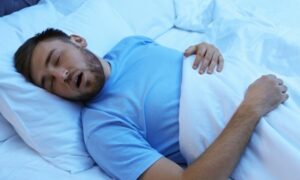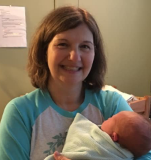A CPAP machine’s goal is to ensure that the patient’s breathing is not obstructed while sleeping at night. The device applies air pressure through your nose or mouth continuously. Those with obstructive sleep apnea will benefit from CPAP machine masks, and they may even save their lives. However, the right pressure level needs to be maintained if you want the device to work as intended.
For CPAP therapy to work correctly, you will need to work closely with a doctor to find the ideal air pressure level for you. Here, we will discuss ways to help maintain optimal CPAP mask pressure and why it is so important.
CPAP Therapy
A clinically proven way to help treat sleep apnea is to use continuous positive airway pressure therapy. CPAP machines use a moderate level of air pressure to keep your airway open. The CPAP machine mask will cover your mouth and nose, and the tube will connect the machine’s motor to the CPAP mask. The motor of the machine will then blow air into the tube.
Without CPAP therapy, your airway would remain closed while you sleep. The therapy will also help reduce many obstructions in your breathing and will eliminate or reduce snoring. Your quality of night sleep will also drastically improve thanks to CPAP therapy.
CPAP machine masks have many benefits, including helping you be more productive thanks to lowered daytime drowsiness levels. They may even save your life if your sleep apnea is severe. Certain forms of heart disease are associated with chronic sleep apnea, and CPAP therapy may reduce your risk of heart disease.
How a CPAP Machine Works
The compressor in the machine produces a very specific quantity of air pressure. The CPAP machine mask is affixed to your face, and the mask’s hose will send air from the compressor to the mask: By doing so, your airways will be held open while you sleep.
The lowest CPAP machine pressure setting ranges from four to five centimeters of water pressure on all CPAP machines. As for the maximum level of water pressure, it ranges from twenty-five to thirty-five CWP.
Generally speaking, for patients to enjoy maximum effectiveness from their CPAP machine, they will need to increase the CWP.
Average Pressure for Treating Sleep Apnea
The air restraint level varies from person to person, depending on the dimensions of their throat and passageway. However, the average pressure needed to treat the average patient with sleep apnea is 10 CWP. As for obstructive sleep apnea, the average pressure levels will range from six to fifteen CWP. It is important to note that your CPAP therapy will be custom-tailored to your unique needs, so your pressure levels will be modified accordingly.
You should talk to your sleep specialist/therapist if you have issues, as they will help fine-tune your CWP so that you can enjoy optimal sleep. Also, as time passes, you may need to make some adjustments to your CWP, which is normal.
Determining If Your CPAP Pressure Needs Adjusting
If you feel uneasy or strange due to your mask’s pressure, you may need to increase or decrease your CWP. There are certain signs to look for, such as fluid leakage from your ears and a dry mouth. Other signs to look for include a dry nose and needing to breathe through your mouth instead of your nose. If you are exhibiting any of the symptoms above, please consult with your sleep therapist to adjust your CWP.
If there is a leak in your mask, then the unit’s air pressure will take a dip. Another indication of low air pressure is if you snore during your therapy. It is important to pay attention to how you feel during the treatment to determine which level of CWP is best.
The correct pressure for you will also be influenced by your general health, weight, and age. You should also pay attention to your sleep quality, apnea-hypoxia index (AHI), and side effects. For example, an AHI reading of five or more is an indication of high pressure.
Apneas will also vary based on positions, sleep stages, and other factors. If you have severe sleep apnea, then your doctor may suggest higher pressure levels. Some people may be tempted to quit their sleep therapy due to the side effects of higher pressure settings. However, you can improve your health while still maintaining a higher pressure setting by trying a new CPAP mask, such as a nasal, nasal pillow, or full face CPAP mask. You can also use a humidifier to soften the air that passes through your machine.
Another option is to try other machines, such as a BiPAP (Bilevel pressure) or an AutoPAP machine. An AutoPAP machine will automatically adjust your pressure setting based on how you breathe during the night.
How to Adjust the CPAP Pressure
For your doctor to obtain the ideal pressure prescription for you, they will need to assess your sleep titration. If you are having trouble with your current pressure level, then a new titration study will be used to estimate the optimal pressure level.
CPAP Masks for High Pressure
If your CPAP mask pressure is elevated, there are steps you can take to improve your treatment and comfort levels. For example, masks should be cleaned routinely, as a dirty mask will lead to discomfort and leaks. Your mask should also be in good shape, as worn-out and incorrectly fitted masks may also cause leaks and discomfort.
We would also recommend a full-face CPAP mask if you want to maximize comfort levels at a higher setting. Nasal masks will direct the air pressure to your nostrils, and you can use one with a foam cushion to enjoy a comfortable and airtight seal. Nasal pillow masks will also help those who toss and turn during sleep. A machine with a humidifier, or a humidifier attachment, will moisten air to prevent dryness that can irritate.
PAP Devices With Automatic Pressure Settings
A BiPAP machine will provide both an exhale and inhale pressure. Air pressure will be reduced when you exhale and will be more reliable when you inhale.
Automatic positive airway pressure machines (AutoPAP) will automatically adjust pressure levels so that you obtain the precise amount of air pressure needed to sleep comfortably.
CPAP Mask for Better Sleep
Your mask’s pressure settings should be ideal to manage your sleep apnea. You should also consult your doctor before making any adjustments to your CPAP machine mask or the machine itself.
Find a sleep apnea specialist here.







